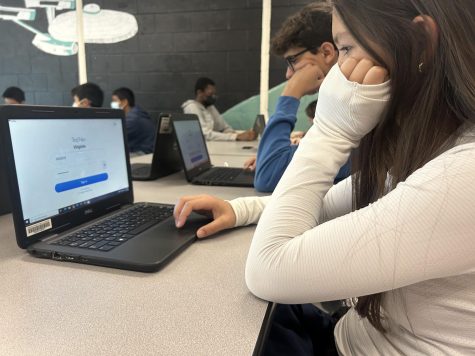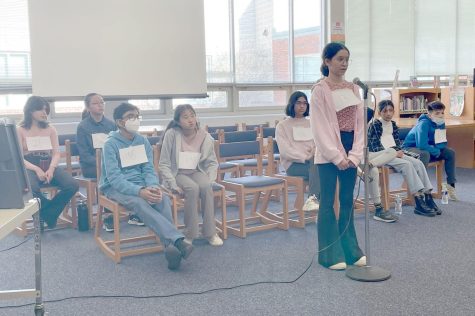OPINION: Changed Dress Code Still Results in Sexist Enforcement
THIS IS A STUDENT EDITORIAL AND DOES NOT NECESSARILY REFLECT THE OPINION OF LONGFELLOW ADMINISTRATION
Despite many changes to the dress code this year that relaxed some of the former rules, girls are often still feeling targeted by the way the dress code is enforced.
Some of the changes are a big deal for girls, who have been complaining for years that the dress code unfairly targeted them with their list of prohibited clothing. The 2016-2017 SR&R listed: “Clothing should not expose cleavage, private parts, the midriff, or undergarments, and in the case of pants the waistband should not fall below the hips,” and, “clothing and accessories should not be see-through or sexually provocative.”
FCPS board member-at-large Ryan McElveen started pushing for changes to the dress code back in June of 2018 specifically to address the gender bias in the language, according to NBC News 4.
The article showed McElveen’s tweet from June 11, 2018. “School dress codes around the country have unfairly targeted girls for generations, and it’s long past time for a change,” the tweet said. “At the School Board meeting this Thursday, June 14, I will propose an amendment to the FCPS dress code to help end the body shaming.”
Three years later, the changes are official, but they were made quietly without a lot of explanation. Teachers and administrators talked about why they thought the changes were made, but no one knew with certainty.
The 2021-2022 SRR doesn’t call out female bodies, instead of saying, “Clothing should not expose private parts or show an excessive amount of bare skin (see-through clothing).” In addition, it states, “Discussion about dress code violations shall be held privately and maintain the dignity of the student.”
But there is still room for interpretation, particularly in the unchanged language, which states, “FCPS respects students’ right to express themselves in the way they dress. It is important, however, that their appearance is tasteful and appropriate for a K-12 school setting.”
“I believe that the School Board and all of our stakeholders here at Longfellow want all students to feel welcome and valued for who they are here at LMS,” stated Assistant Principal Aidan Vigil.
Science teacher Brianna Burnett also pointed out cultural awareness as a reason for the change but was definitely aware of the “body shaming” aspect and a growing awareness of how that practice negatively impacts some kids.
“Being more mindful about how the dress code is affecting certain people was what has turned it around,” Burnett suggested. Adding, “With there being more observance in different cultures, more cultural awareness, the dress code has been relaxed to accommodate more of those cultural differences. It’s generally more accepted as long as it doesn’t hurt anybody.”
Though the county creates the overall dress code, each school can modify how they execute it, and Burnett believes that the students have a large amount of leeway in the way they dress.
“There’s definitely way more freedom than there has ever been.”
Each school decides on their own how strict they will be with the enforcement, but each teacher has a different view on the dress code and how they enforce the rules individually. Each teacher has their own personal beliefs, no matter how neutral they try to be. From a student’s perspective, it feels like teachers are either for the new changes or against them.
Interpreting the term “tasteful and appropriate for a K-12 school setting,” Burnett explained, “I think students dressing for the circumstance they’re in is very important. You’re coming to school to learn; you’re not going to a dance party.”
Because of different ideas about tastefulness, some girls still feel targeted by their teachers. It makes children uncomfortable when you comment on their bodies like it’s something you feel entitled to regulate. And that is why FCPS should focus more on educating their teachers about the reasons for the rules and set rules on how they should enforce the dress code.
If students at LMS would like to make their voices heard on this issue, they are encouraged to do so through the Raising Student Voices Committee. “The committee is a group where students are able to talk with administration in a structured setting and work on developing solutions,” Mr. Vigil explained.
He also said that the dress code would be discussed during one of the meetings.







